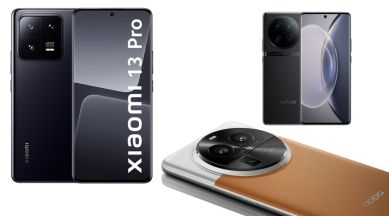From Xiaomi 13 Pro to Oppo Find X6 Pro, the best 1-inch camera sensor phones on the market
Smartphone OEMs are shifting their focus to shipping larger camera sensors, with several models featuring the 1-inch Sony IMX989 sensor.

Software processing plays a major role in the image quality when it comes to smartphones. But it can only do so much with poor hardware. After dabbling in the megapixels game and taking the pixel count up to astronomical numbers, smartphone OEMs are now shifting their focus to shipping larger camera sensors.
Oppo has announced the Find X6 Pro with Sony’s 50-megapixel 1-inch-type IMX989 sensor in China. Larger sensors capture more light, which is especially useful in low-light scenarios where they help improve exposure balance, dynamic range, and sharpness. We should be seeing these advantages on the Find X6 Pro too if and when it launches in India.
But the Oppo Find X6 Pro isn’t the only phone in the market right now with a 1-inch sensor. There are several models from Xiaomi, Vivo, and even Sharp – and today, we take a look at them.
Xiaomi 13 Pro
The Xiaomi 13 Pro’s impressive spec sheet earns it some serious bragging rights, but the specs are undoubtedly headlined by its camera hardware. The phone is one of the very few in the market that does not skimp on the secondary camera sensors.
Aside from the 50.3MP 1-inch primary camera, the Xiaomi 13 Pro’s Leica-branded camera island packs a 50MP telephoto lens and a 50MP ultrawide lens. And if a triple 50MP rear camera setup isn’t enough, the phone also features a high-res 32MP front camera. In our review we noted that the Rs 79,999 device is “one of the best Android camera phones” around.
Oppo Find X6 Pro
Announced on Tuesday, the Oppo Find X6 Pro is ushering in the ‘three main camera era,’ according to the company. And justifiably so – all three cameras on the phone’s rear feature the largest sensors in the smartphone world in their respective positions. The phone’s primary camera sensor is the 1-inch 50.3MP Sony IMX989 sensor, which is the same as the Xiaomi 13 Pro’s. But there’s also the 50MP Sony IMX890 sensor used for the ultrawide and periscope cameras.
It isn’t clear when this phone will launch in India, if it will at all. Oppo India skipped the Find X5 series last year and there’s no telling if it’ll do the same for the Find X6 Pro as well.
Vivo X90 Pro
The Vivo X90 Pro is expected to be launched soon in India. It again features the same 1-inch Sony IMX989 sensor like the other phones on the list, enhanced by a Leica partnership. Vivo says that the sensor size helps the phone “improve every night shot with clarity, purity, and superiority.” The camera is assisted by a V2 chip, which helps process HDR and uses AI to reduce noise.
Xiaomi 12S Ultra
The Xiaomi 12S Ultra is another offering from Xiaomi sporting the 1-inch Sony IMX989 sensor, which is assisted by dual 48MP cameras. In our review, we noted that the phone captures some “really nice low-light photos, even in extreme darkness.”
Sadly, the phone never made it anywhere outside of China. It costed 5,999 yuan (about Rs 72,000) in the country, meaning had it launched here, it would’ve cost similar to the Xiaomi 13 Pro. Still, those lamenting the lack of the device in India can always go for the Xiaomi 13 Pro instead, so not all’s lost.
Sharp Aquos R7
Not many may know this, but Japanese consumer electronics company Sharp also makes smartphones. Its Aquos R7 smartphone launched exclusively in Japan in May 2022 also features a primary camera powered by the 1-inch Sony IMX989 sensor. Camera aside, the phone also features a 6.6-inch Pro IGZO OLED with FHD+ resolution, a super-smooth 240Hz adaptive refresh rate, and an impressive 2,000 nits peak brightness.